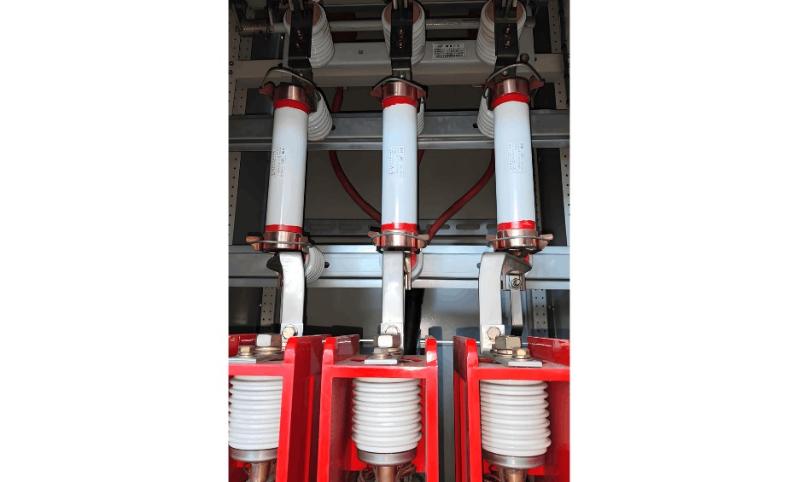- Product
- Suppliers
- Manufacturers
- Solutions
- Free tools
- Knowledges
- Experts
- Communities
Search
-
Free tools
-
IEE Business ya bayar abubuwa mai inganci da ke AI don kudin karkashin kimiyya da yanayin aiki da kudin kasa: zaka iya kawo hanyoyinka, daba ta shafi, za ka samun abubuwan daidai game da transformers wiring motors kudin kasa da sauransu - wanda masana'antu a duniya sun fi sani.
-
-
Taimakawa da Kudin Zama
-
IEE-Business taimakawa hanyoyi masu sauki da kuma gida da malamai - tattaunawa takarduka da zan iya tabbatar da kyauMa'arufin ilimin teknik mai kyauAiki da shirye-shiryar ilimi na kimiyya don samun maza daga masu taimakawaGaba-gaban Ayyuka Masu Yawan Inganci加入 دوپلما IEE-Business كرونو رادا فييسي منونتي ناوين كومان سودورواMasu fahimtar da ke da alamaRakowa abubuwan ku na masu siyasa, sami masa futurin ku!
-
-
Al'umma
-
Ƙirƙir ƙungiyar kuɗin gargajiyaNemo da haɗu da abokan kasuwanci, masu iya kama, da masu sharraka don karfafa IEE-Business.Ƙara shabarar idoɗin kuɗiHaɗa da abokan sayen farko, haɓakokin aiwatarwa, da manufofin kiyaye don rage kwana gurbin kuNemo Saurar ArrabinsaKwalin shigowar al'adu, masu aiki da kai, da masu lafiya na al'adamu don fara sauraron kasuwanci.加入多元化社区Ƙa yi shirye-shiryen da abubuwan koyaushe, kama-ƙauyen tashoshin kasuwa, da raba kayayyaki don kawo ƙarin tasiri.
-
-
Yarda Muna
Dakilin Aiki
-
-
加入lEE-Business Partner ProgramKawo Ci Gaba Da Iƙiƙata – Daga Alatun Teknikal Zuwa Kaugunan Ayyukan IEE-Business
-
-
IEE Business
-
Hausa
-
- English
- Afrikaans
- العربية
- Azərbaycan dili
- български
- বাংলা
- Català
- Cebuano
- čeština
- Dansk
- Deutsch
- Ελληνικά
- Esperanto
- Español
- Eesti keel
- Euskara
- دری
- فارسی
- suomi
- Filipino
- français
- Gaeilge
- Galego
- Hausa
- עברית
- हिन्दी
- Hrvatski
- magyar nyelv
- հայերեն
- Bahasa Indonesia
- Íslenska
- Italiano
- 日本語
- ქართული
- Қазақ тілі
- ಕನ್ನಡ
- 한국어
- Kurdî
- Latina
- Latviešu valoda
- македонски јазик
- Bahasa Melayu
- Malti
- नेपाली
- Nederlands
- Norsk
- ਪੰਜਾਬੀ
- polski
- پښتو
- Português
- Русский язык
- සිංහල
- Slovenščina
- српски језик
- Svenska
- Kiswahili
- தமிழ்
- తెలుగు
- ไทย
- Tagalog
- Türkçe
- українська мова
- اردو
- Oʻzbek tili
- Tiếng Việt
-
Ma'arufin ilimin teknik mai kyau
-
Hausa
-
- English
- Afrikaans
- العربية
- Azərbaycan dili
- български
- বাংলা
- Català
- Cebuano
- čeština
- Dansk
- Deutsch
- Ελληνικά
- Esperanto
- Español
- Eesti keel
- Euskara
- دری
- فارسی
- suomi
- Filipino
- français
- Gaeilge
- Galego
- Hausa
- עברית
- हिन्दी
- Hrvatski
- magyar nyelv
- հայերեն
- Bahasa Indonesia
- Íslenska
- Italiano
- 日本語
- ქართული
- Қазақ тілі
- ಕನ್ನಡ
- 한국어
- Kurdî
- Latina
- Latviešu valoda
- македонски јазик
- Bahasa Melayu
- Malti
- नेपाली
- Nederlands
- Norsk
- ਪੰਜਾਬੀ
- polski
- پښتو
- Português
- Русский язык
- සිංහල
- Slovenščina
- српски језик
- Svenska
- Kiswahili
- தமிழ்
- తెలుగు
- ไทย
- Tagalog
- Türkçe
- українська мова
- اردو
- Oʻzbek tili
- Tiếng Việt
-
Kalkulalai Elektirikai Da Dukkiya
Ma'arufin ilimin teknik mai kyau






















